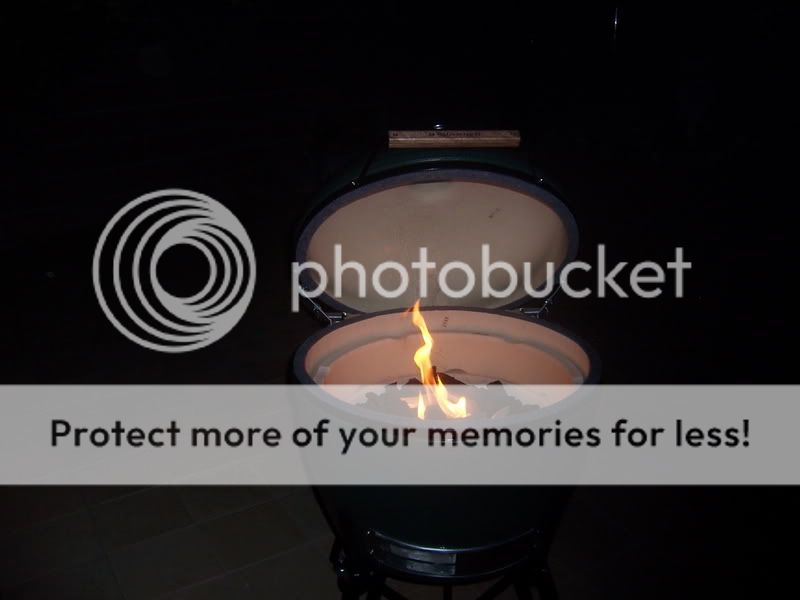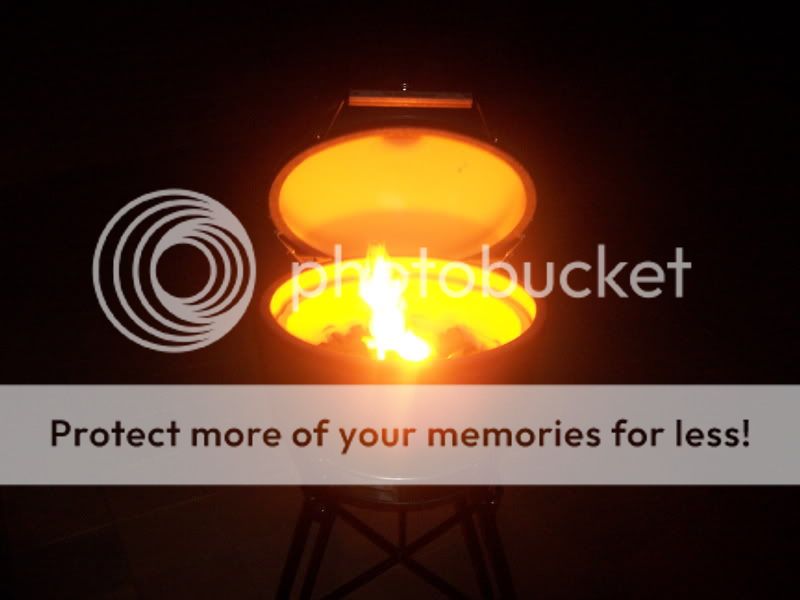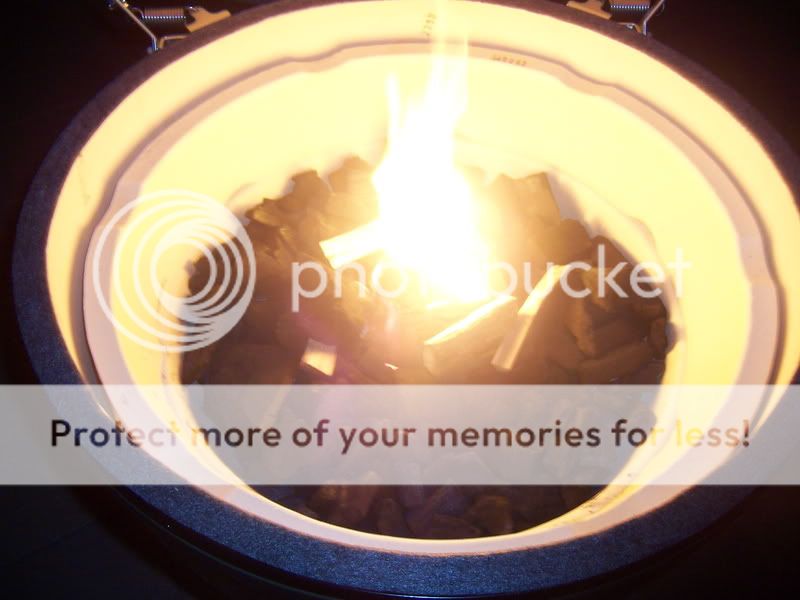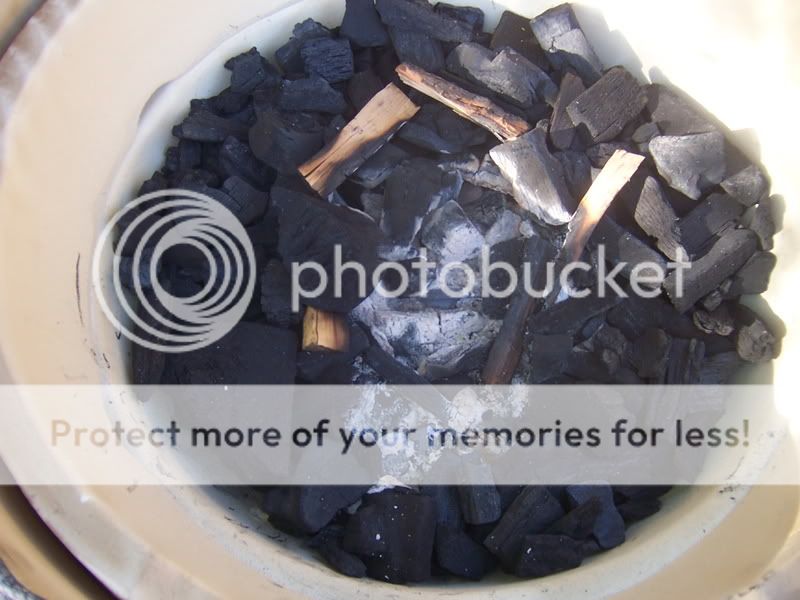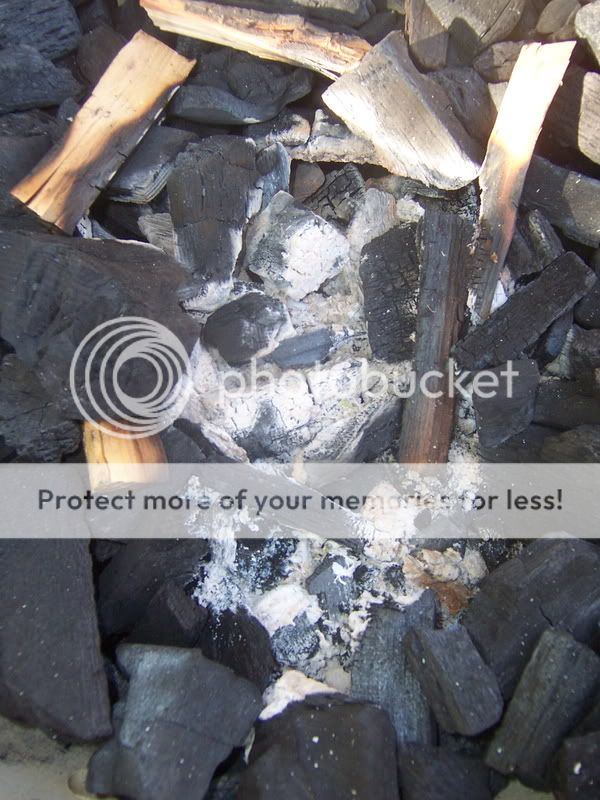the procedure used at the start depends on the method used to light the charcoal. for all lighting methods, open the bottom completly, including the spark screen and remove the top damper completely.
- if you use the napkin/oil start method, leave the dome open for a bit till the napkin gets going well and then close the dome and peak in thru the top to make sure the napkin is still on fire. closing the dome will enhance the draft from the bottom and the fire will grow DOWN first before it spreads. if you have a lot of small lump, put those pieces on the outer edge of the pile so they don't block the airflow in the middle. use only large and medium pieces in the middle to help get the fire established.
- if you use a weed burner (preferred method by me), mapp gas, or propane torch, light the lump till the middle top is glowing, then close the dome, bottom all the way open and top completely off. the lump will grow down towards the draft and then spread outward.
don't let the initial rise in temp from the flames fool you into dampering down the vents, you need to heat the large amount of ceramic mass before lowing the temp becomes a problem and heating that much ceramic mass takes a good 30 minutes or more. i usually get a good hot 300-325 degree fire going first so a lot of the lump is glowing, then damper it down to 250 settings for a long smoke cook.
for all methods of lighting, put in the plate setter soon in the beginning after some lump gets going because you need to heat up the ceramic mass of the plate setter along with the egg mass.
hope that all makes sense. i had hernia sugery yesterday, one in my belly button and one an inch above my belly button and i'm a little loopy and i'm rambling :biggrin:
now i don't have a belly button! :shock:

